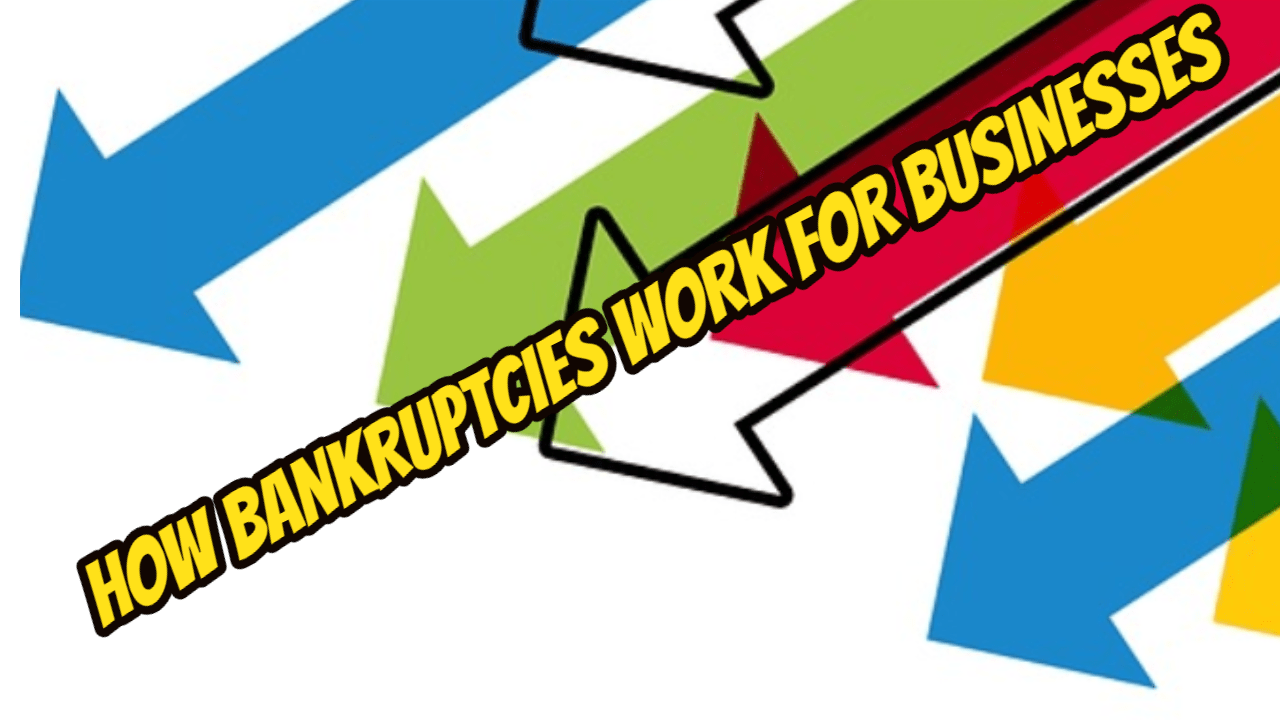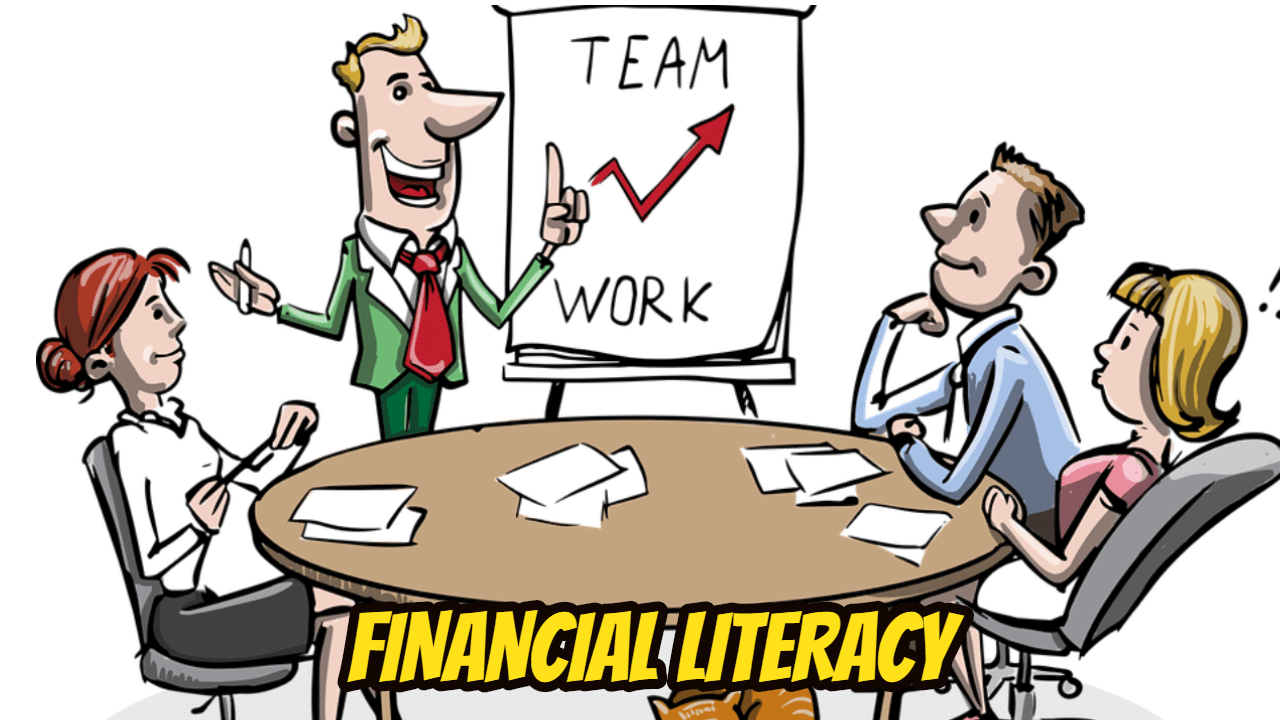How bankruptcies work for businesses: Introduction

How bankruptcies work for businesses: Introduction
Recently I have written several blogs focussing on insolvency and specifically the topics of consumer proposal and personal bankruptcy. To round out the discussion, this Brandon’s Blog discusses how bankruptcies work for businesses in Canada.
To be clear, the goal for either personal bankruptcy or corporate bankruptcy is to avoid bankruptcy. We have many tools in our toolbox to help people and companies avoid bankruptcy through restructuring. It is only when the person has stewed over their personal or business problems for too long that they come to us when it is too late. When it is too late, our hands are tied for creative problem-solving.
How bankruptcies work for businesses: Where we start
When a business owner comes to our office for a free consultation, we start with some basics. The first thing we do is ask certain questions that will allow us to get a financial snapshot of the business. We need to know about the assets and liabilities of the business.
We need to understand who all the creditors are and what the assets are. Which creditors may have a deemed trust claim or a secured claim against the assets. What is the total and nature of the unsecured debts?
That information tells us what choices we may have in helping the business recover: is an informal debt settlement restructuring possible;
what do we think about the likelihood of a formal restructuring under either the Bankruptcy and Insolvency Act (R.S.C., 1985, c. B-3) (BIA) or the Companies’ Creditors Arrangement Act (R.S.C., 1985, c. C-36) (CCAA); or is the business too far gone and therefore bankruptcy or just shutting down are the only options remaining.
How bankruptcies work for businesses: The proprietorship
If the business is unincorporated, then the person is carrying on their business in the form of a proprietorship. They are conducting business in their personal name. They may use a business style, but the legal reality of a proprietorship is that the individual, in their personal capacity, is carrying on business. So, the assets and liabilities that are created in the business, is owned by and is the responsibility of the person.
So, in this situation, it will be a personal insolvency discussion. The available remedies will be:
- an informal restructuring;
- (consumer) proposal debt settlement plan; or
- personal bankruptcy
If you wish to find out more about personal insolvency, or how bankruptcies work for individuals, you can read some of my previous blogs. Good examples are WHAT IS THE DIFFERENCE BETWEEN BANKRUPTCY AND INSOLVENCY CANADA or CANADIAN DEBT SOLUTIONS: AVOIDING THE BANKRUPTCY PROCESS MIGHT BE THE RIGHT THING.
How bankruptcies work for businesses: Incorporated businesses
So now we have gone through the starting point I just described and we have determined that we are dealing with an incorporated business. We first focus on many issues before even discussing how bankruptcies work for companies.
First, we want to know how well does management understand its own business problems. If management does not have a good handle on their business problems, then they first need to get that deep understanding. They may know that monthly when looking at the numbers, they see that losses are continuing. Management, especially in an entrepreneurial or family-owned company, may feel ashamed because they don’t feel like they’ve made good decisions. Or they are aggravated and embarrassed because family members have told you the company is finished.
If you know in your heart that if you do not do something today, you may be risking the entire business.
How bankruptcies work for businesses: Know your numbers
To restructure companies for a successful turnaround, you first need to know your numbers and what they mean. The goal is to have the company producing sufficient cash levels and for everyone in the business to be earning a fair market-based income.
Management must look at the entire business and ask:
- Where’s the profit?.
- Do we have the money to actually run and scale the business?
- What is getting in the way for the business to charge the revenue its products or services are worth?
- Do we have the necessary cash and people resources will we need for a turnaround?
- Are there lines of business or locations that need to be shed to increase profitability?
- What expenses can we cut without harming our core business?
- Which contracts do we need to cut to return to profitability and growth?
- Do we have the proper reporting systems to give us the information we need to get prompt and accurate information?
- Can we properly analyze the business issues and take the necessary corrective action?
- Do we have the right people to carry on the business while implementing the turnaround?
- Are we experienced enough to carry out our own turnaround or do we need outside professionals to help us with it?
- Do we know what the impediments are to having a successful informal restructuring or do we need to look at a formal restructuring process?
These are the main questions that first must be answered for any business experiencing financial difficulties and facing insolvency. This is especially true for more complex companies. New systems or techniques may need to be implemented. If management can answer these questions for themselves, we want to hear those answers. If not, then a financial advisor may need to be retained. My Firm has been regularly retained, either by a company or its lender, to answer these questions and provide our recommendations. This kind of assignment is called a Business Viability Review.
After we provide our recommendations, we then work with the company to help them decide if they can carry out the recommendations and strategies themselves, or if they need our help to do so. If management can do it on their own, many times the lender will want us to stay involved by monitoring the company’s progress and reporting back to both the company and the lender.
The aim is always to avoid bankruptcy but it’s practical to recognize what it is and when it could be suitable. Companies are complex organisms. There may be the need to shed unprofitable contracts or long-term agreements that are just too expensive to continue with. It may be that disposing of such onerous contracts, leases or agreements is crucial to have a viable ongoing business. Many times a formal restructuring process is necessary to legally end those types of agreements.
It is the largest of company restructurings that we hear about in the news. From the United States, we read about Chapter 11 bankruptcy protection filings. In Canada, we read about restructurings under the CCAA. The largest of companies do not represent the size of the majority of Canadian companies.
For the biggest of companies, they can get relief and press back on creditors. There is an old adage which says: “If you owe the bank a bit of money, they own you. If you owe the bank a huge amount of money, you own them.”. In that way, in the largest company restructurings, the business can get a long time to either sell particular assets where the cash will help them rebound. They will also get the time they need to “rightsize” their employee numbers and shed unprofitable contracts. Loan changes with their secured lender or banking syndicate is also on the table and accomplished, more often than not. Their sheer size demands it and they get it.
How bankruptcies work for businesses: The reality for the majority of Canadian companies
Canadian business is full of entrepreneur-owned companies. So, that is what I will focus on in this Brandon’s Blog. If the business owner(s) come to us early enough, then we can decide if an informal restructuring will work or if not, what needs to be done in a formal restructuring. For any business that owes less than $5 million, it will normally be a BIA restructuring debt settlement proposal. We have done many successful company restructuring proposals under the BIA.
The answers to all the questions I posted above, will tell us what the restructuring needs to look like, how long it will take, and what our projections show about the profitability and viability of the business after a successful implementation of the restructuring plan.
How bankruptcies work for businesses: Company bankruptcy
In a company bankruptcy, the Licensed Insolvency Trustee (formerly called a bankruptcy trustee) (Trustee) takes possession of the assets, properties, and undertakings of the company. This assumes that there are not secured creditors who have all the assets of the company tied up. If there are, then the company may not need to go into bankruptcy. Rather, a secured creditor will take enforcement action by making a demand on the insolvent company. However, if the loan is not repaid in time, then the secured lender will appoint a receiver to take possession of the assets covered by the lender’s security. In Canada, this is normally a Chartered Bank and all the assets are secured.
Sometimes a company in receivership needs to also file for bankruptcy. The main reason would be to aid in maximizing the recovery on the assets. For example, the company is a retail chain. The only way to maximize the recovery is to run the business and sell off the assets from one or more stores. One way to guarantee quiet enjoyment of the stores the receiver needs to stay in is to have a bankruptcy. That is because, under Provincial commercial tenancy law, a trustee in bankruptcy has a certain time to stay in the premises, undisturbed, as long as the current rent is paid.
How bankruptcies work for businesses: Receivership or bankruptcy
Whether there is a receivership or bankruptcy, there are many steps that a receiver or trustee have in common. These include:
- Determining whether or not the recovery on assets will be maximized if the business is operated by the receiver or Trustee.
- What impediments are there in running the business?
- What is the best way to sell off the assets? As an entire group or parcels of assets that make sense to keep together, or one by one?
- Are there any third party assets not owned by the company on the premises or other locations?
- Are there assets owned by the company in any other locations?
- Is there proper insurance and physical security over the assets?
- Once the assets are sold and the cash received, what claims are there against the funds and what is the priority of all the potential claimants?
How bankruptcies work for businesses: The entrepreneurial company reality
Most mid-size and small companies when they’re in difficulty, do not submit a formal restructuring plan or file for bankruptcy at all. They just shut down by closing the doors. The owner will get the company’s final income tax and other information returns completed and filed. They will make sure that employee wages are paid current. Hopefully, source deductions and HST are fully paid up.
Wages, source deductions and/or HST that are not fully paid, are a personal liability of the Directors of the company. In the entrepreneurial companies, the owner(s) have probably personally guaranteed bank loans, premises and equipment leases or have raised funds to start and invest in the business by taking out at a mortgage against their home.
This brings us to the reality of most midsize and small businesses. The business failure leads to personal insolvency issues. Many times we advise entrepreneurs that their company filing an assignment in bankruptcy is not necessary. Rather, they should just shut down their business and then we will deal with their personal insolvency issues. This will allow the entrepreneur to get a fresh start.
Now what is required is getting a job in their field and earning a salary without the risk and challenges of running their own business. Once they get their fresh start, are back on their feet and saved up some money, they can decide if being an employee or starting a new business will be their future.
How bankruptcies work for businesses: Does your company have too much debt?
Is your company insolvent and needs to restructure? Is your business viable but can only continue if it can reorganize its debt? We know your pain and understand the stress you are living with. The Ira Smith Team has decades and generations of experience in company restructurings of all sizes.
Contact the Ira Smith Trustee & Receiver Team. If we can meet with you in our free first consultation early enough, we can create and help you start a restructuring and turnaround plan. This will allow your company to continue to do business, create jobs and be profitable for many years to come.





 Income tax debt relief: Introduction
Income tax debt relief: Introduction



